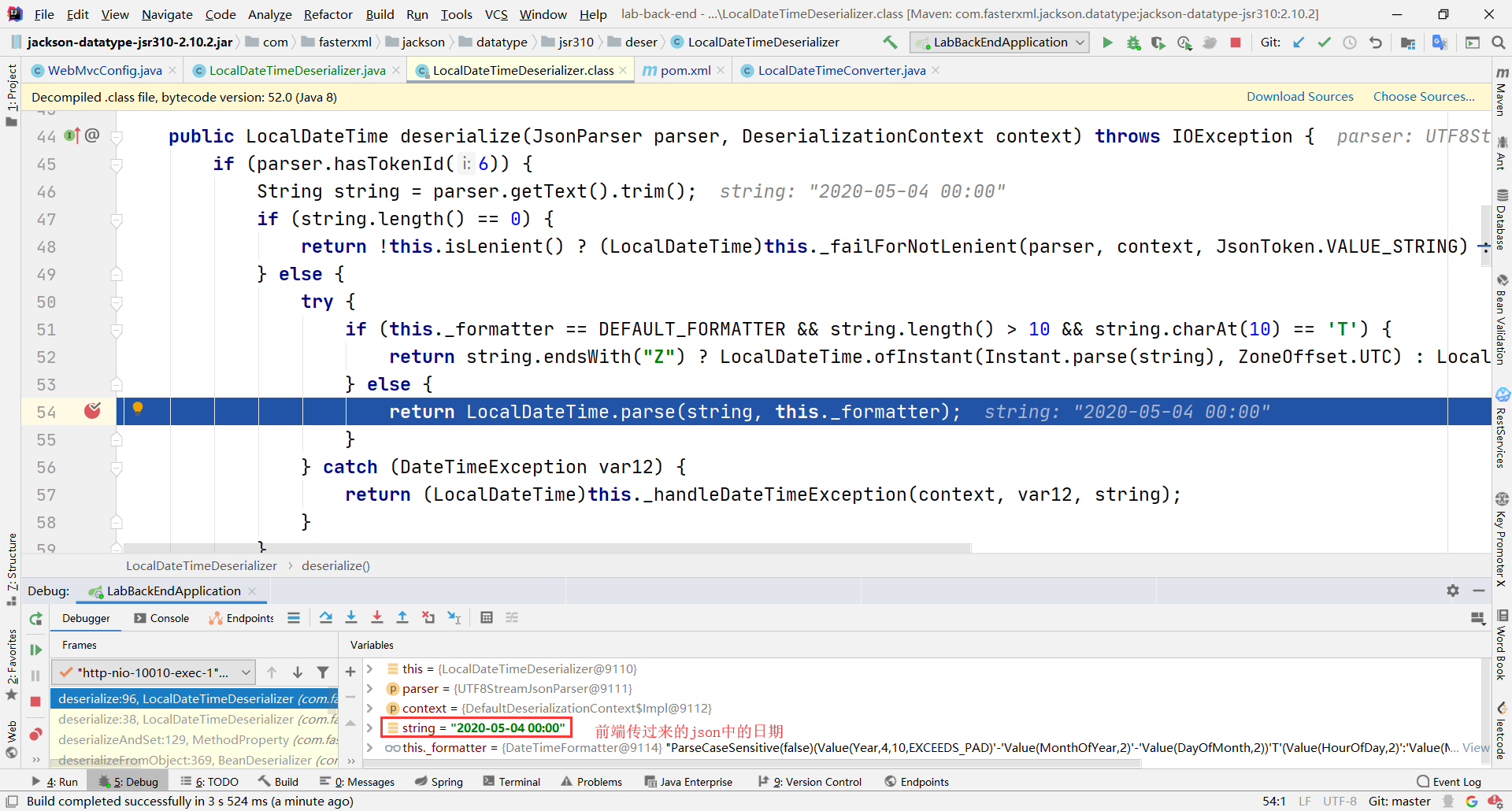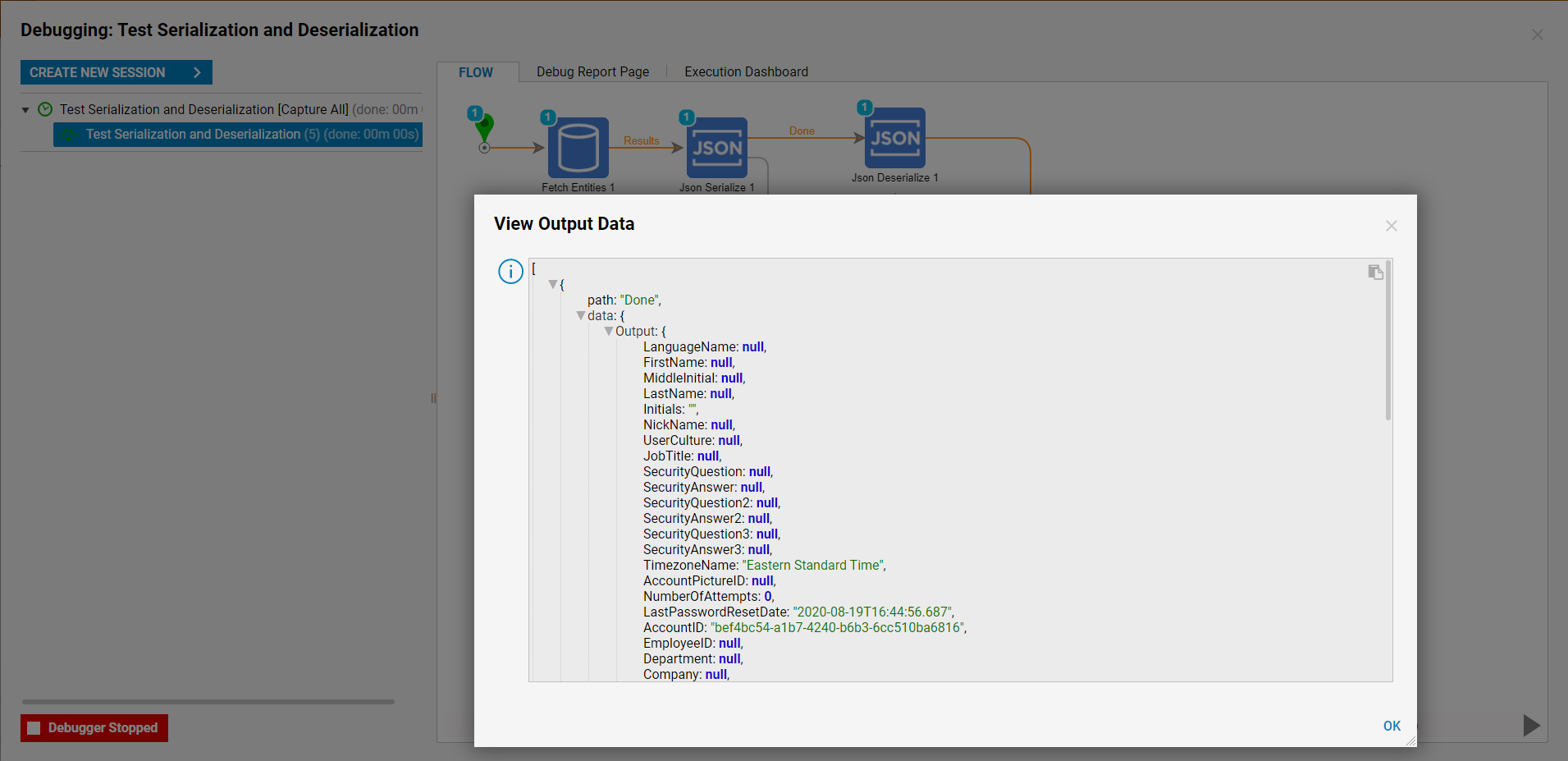- Debug Json Deserialization
- Debug Json Deserialization Tutorial
- Asp.net Core Debug Json Deserialization
Get your breakpoint to hit. In the debug console, write var tmpJson = JSON.stringify (yourJsonObject) This will now have populated the watched variable tmpJson with the string representation of your json object. In the debug view, right click on the watched variable, click copy. Dump Extension Method. The JSON class has a method called “serializePretty” that takes a general Object as an input and returns a string. Whenever you use this method for system.debug, it will put each property-value pair of your object on a new line.

The Error event is an event handler found on JsonSerializer. The error event is raised whenever an exception is thrown while serializing or deserializing JSON. Like all settings found on JsonSerializer, it can also be set on JsonSerializerSettings and passed to the serialization methods on JsonConvert.
In this example we are deserializing a JSON array to a collection of DateTimes. On the JsonSerializerSettings a handler has been assigned to the Error event which will log the error message and mark the error as handled.
The result of deserializing the JSON is three successfully deserialized dates and three error messages: one for the badly formatted string ('I am not a date and will error!'), one for the nested JSON array, and one for the null value since the list doesn't allow nullable DateTimes. The event handler has logged these messages and Json.NET has continued on deserializing the JSON because the errors were marked as handled.
One thing to note with error handling in Json.NET is that an unhandled error will bubble up and raise the event on each of its parents. For example an unhandled error when serializing a collection of objects will be raised twice, once against the object and then again on the collection. This will let you handle an error either where it occurred or on one of its parents.
If you aren't immediately handling an error and only want to perform an action against it once, then you can check to see whether the ErrorEventArgs's CurrentObject is equal to the OriginalObject. OriginalObject is the object that threw the error and CurrentObject is the object that the event is being raised against. They will only equal the first time the event is raised against the OriginalObject.
Contents
- 4. Ignore NULL fields
- Summary
1. Introduction
Jackson is one of the most common Java libraries for processing JSON. It is used for reading and writing JSON among other tasks. Using Jackson, you can easily handle automatic conversion from Java objects to JSON and back. In this article, we delve into some common Jackson usage patterns.
2. Converting a POJO to JSON
Suppose we want to convert a sample POJO (Plain Old Java Object) to JSON. An example class is defined below.
Converting such an object to JSON is just a couple of lines:
3. Pretty Printing
Note that the default output is quite compact. Sometimes it is useful to be able to view indented output for debugging purposes. To produce properly indented output, enable the option SerializationFeature.INDENT_OUTPUT on the ObjectMapperinstance before using it to serialize the object.
The output generated now is nicely indented:
4. Ignore NULL fields

How do we tell Jackson not to serialize nullvalues (as for “dateOfBirth Ps1 emulator machine. ” above)? There are a couple of ways. You can tell the ObjectMapper to skip all NULLfields, or you can use annotations to specify per class or per field.
4.1. Configuring ObjectMapper
4.2. With an Annotation
Use the annotation @JsonInclude(Include.NON_NULL) on the target object class to eliminate serialization of all NULLfields.
Or on a field (or property) to disable specific NULLfields from being serialized. In the code below, dateOfBirth will be ignored if null, but not heightInM.
5. Ignore Empty Arrays
Pdf expert 5 for macbook pro. When you have a class with an empty array initializer, the value is serialized as an empty JSON array.
When you want to skip empty array declarations being output, you can use the following.
6. Generate JSON String
Debug Json Deserialization
How can we generate a JSON string representation instead of writing it directly to a file or an OutputStream? Maybe you want to store the JSON string in a database. Use the writeValueAsString() method.
7. Formatting Dates
By default, Jackson prints Datefields as numeric timestamps as shown below:
Turning off numeric timestamp results in serialization of a date in the ISO 8601 format as shown below:

Change the default date format by using SimpleDateFormatas shown:
8. Converting JSON to POJO
Reading and converting JSON to a Java object is just as easy with Jackson. Accomplished in just a couple of lines:
Debug Json Deserialization Tutorial

The target class (User in this case) needs a no-arguments default constructor defined – failing which you get this exception:
The situation is easily address by adding a no-arguments default constructor.
9. Adjusting Date Format
As before, the date format needs to be adjusted unless it is in ISO 8601 format. Parsing the following JSON fails:
The following exception is reported:
Specify the date format if you are using a non-standard format as shown:
10. Ignoring Unknown Properties
Sometimes the JSON you are trying to read might include some properties not defined in the Java class. Maybe the JSON was updated but the change is not yet reflected in the Java class. In such cases, you might end up with an exception like this:
You can tell Jackson to ignore such properties on a global level by disabling a deserialization feature as follows:
Asp.net Core Debug Json Deserialization
Alternatively, you can use the following annotation on the class to ignore unknown properties.
11. Serializing Array of Objects to JSON
Serializing an array of objects to JSON is straightforward.
The array is properly serialized as shown:
12. Deserialize Array of Objects from JSON
Several methods are available to deserialize a JSON array to a collection of Java objects. Use whatever method suits you depending on your requirements.
Deserializing a JSON array to a Java array of objects of a particular class is as simple as:
Using a JavaTypeis useful when constructing collections or parametric types.
A third method is to create and use a TypeReference.
Summary
This article showed you how to convert Java objects to JSON and back. We also covered a few common use cases.